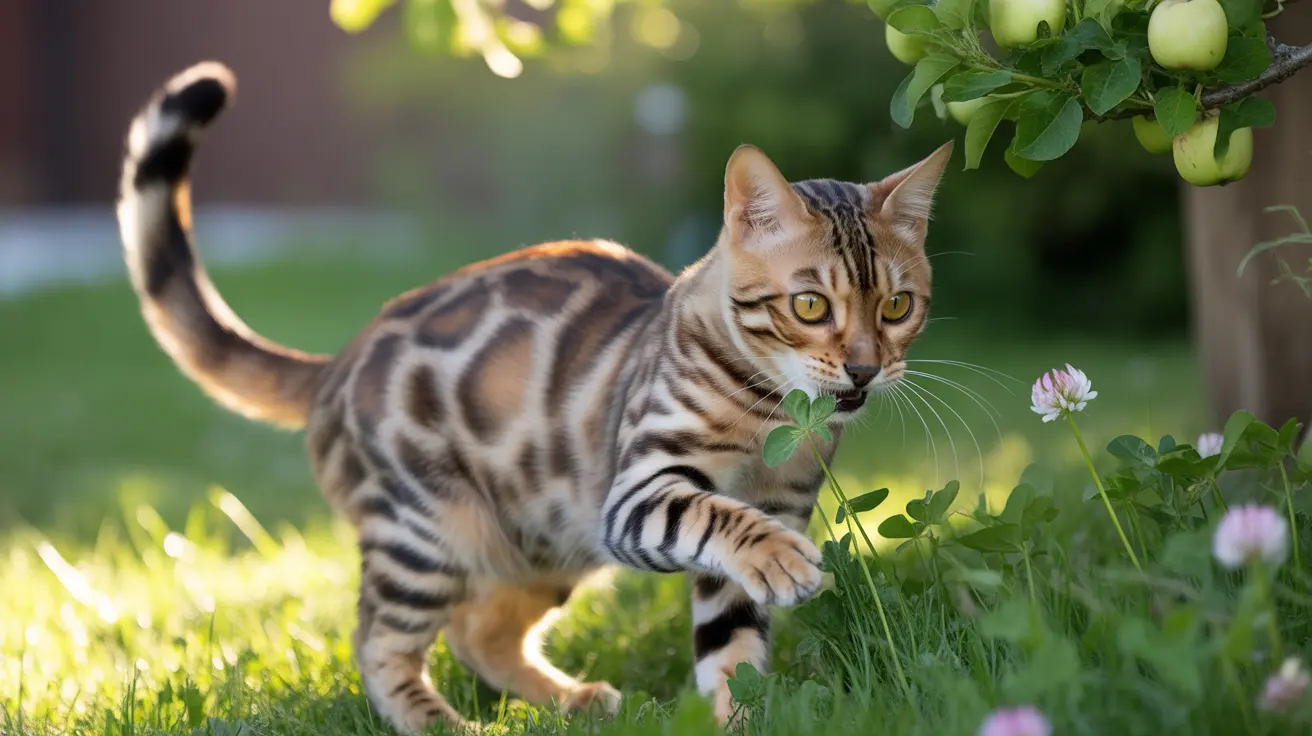Many cat owners have witnessed their furry friends nibbling on plants in the garden, including common clovers. While this natural behavior might seem harmless, it's important to understand the potential risks associated with cats eating clover and similar plants.
In this comprehensive guide, we'll explore the safety concerns of clover consumption in cats, identify dangerous varieties, and provide crucial information for pet owners to protect their feline companions.
Understanding Different Types of Clover and Their Risks
Not all clovers are created equal when it comes to feline safety. Common varieties found in gardens and lawns include white clover, red clover, yellow sweet clover, and crimson clover. However, the most concerning are plants in the Oxalis family, often referred to as shamrocks.
These plants contain varying levels of toxic compounds, primarily oxalic acid and calcium oxalates, which can pose serious health risks to cats when ingested.
Signs of Clover Toxicity in Cats
If your cat has consumed clover, particularly toxic varieties, watch for these warning signs:
- Vomiting and diarrhea
- Excessive drooling
- Loss of appetite
- Lethargy or weakness
- Abdominal pain
- Increased thirst
- Difficulty urinating
Immediate Action Steps for Clover Ingestion
If you suspect your cat has eaten clover, take these important steps:
- Remove any remaining plant material from your cat's reach
- Monitor your pet closely for symptoms
- Contact your veterinarian immediately
- Collect a sample of the plant for identification
- Document when and how much your cat may have consumed
Prevention and Safe Alternatives
The best approach to clover safety is prevention. Consider these alternatives and safety measures:
- Grow cat-safe plants like catnip or cat grass
- Create an indoor garden with pet-friendly vegetation
- Remove toxic plants from your yard
- Provide environmental enrichment to prevent boredom-induced plant eating
- Consider installing protective barriers around garden areas
Treatment Options and Recovery
Treatment for clover toxicity typically involves supportive care, including:
- Intravenous fluid therapy
- Gastrointestinal protectants
- Anti-nausea medication
- Monitoring of kidney function
- Specific treatments based on severity and symptoms
Frequently Asked Questions
Can cats safely eat clover or shamrock plants?
No, most clover varieties are not safe for cats to eat. While small amounts of some clovers might only cause mild stomach upset, others (especially Oxalis species) can be seriously toxic and should be avoided entirely.
What are the signs of clover poisoning in cats that owners should watch for?
Key signs include vomiting, diarrhea, excessive drooling, lethargy, loss of appetite, and in severe cases, difficulty urinating or neurological symptoms. Contact your vet immediately if you notice these symptoms.
Which types of clover are most toxic to cats and why?
Shamrock plants (Oxalis species) are the most toxic due to their high concentration of oxalic acid and calcium oxalates. These compounds can cause severe kidney problems and other serious health issues.
What immediate steps should I take if my cat eats clover?
Contact your veterinarian immediately, remove any remaining plant material, and if possible, bring a sample of the plant to the vet. Monitor your cat closely for symptoms of toxicity.
What are safe plant alternatives to clover for indoor cats to nibble on?
Safe alternatives include cat grass, catnip, valerian, and cat-safe herbs like parsley or rosemary. These can satisfy your cat's natural urge to nibble on plants without risking their health.
Remember, while cats may be naturally drawn to plants like clover, it's our responsibility as pet owners to ensure their environment is safe. When in doubt about any plant's safety, consult with your veterinarian or refer to trusted resources like the ASPCA's toxic plant database.






